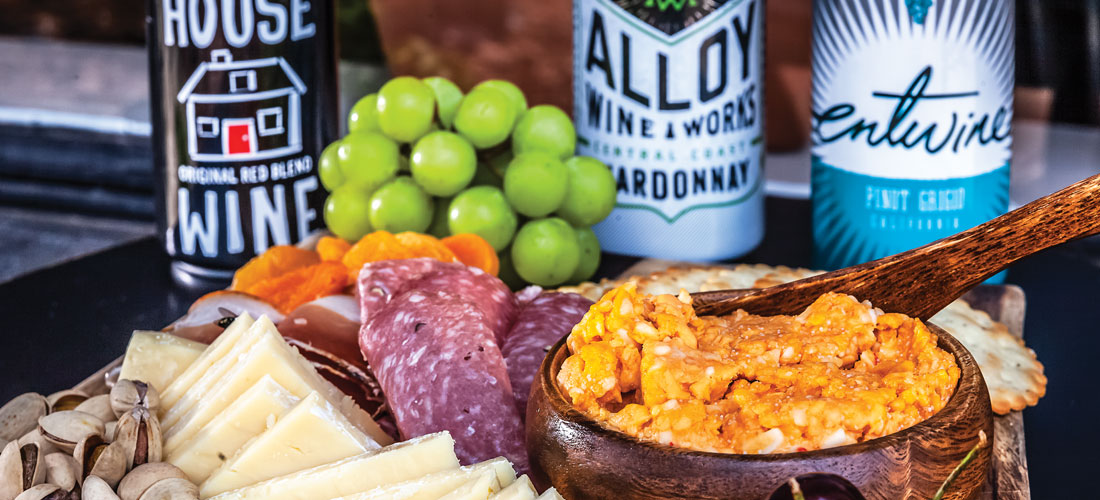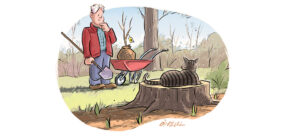
Wine Uncorked
It can be simple, easy and eco-friendly
By Angela Sanchez
Why not drink wine out of a can? Why not drink wine from a bottle with a screw cap or Stelvin closure? Maybe, even a keg? Before all of you confirmed cork devotees get too upset, I’m not talking about grand cru Burgundy or first growth Bordeaux or single vineyard California cabernet from Screaming Eagle. I’m talking about wine that is made to be consumed young — what some people refer to as table wine — without oak or bottle aging. It’s the stuff we everyday folk consume on a regular basis. It’s what we take on boats and road trips and keep chilled for the backyard barbecue and camping in the summer. It’s the wine we have in the fridge and on the rack in the kitchen for when a friend drops by and needs a friendly ear. Nothing serious, just a good bottle we enjoy.
Like a lot of people these days, I want convenience that’s also eco-friendly, but my primary reason for exploring alternative closures and vessels for wine is the cork itself. Harvested from cork trees grown in Portugal and then crafted into fitted closures for wine bottles, the cork contains living organisms that can go bad and “taint” the wine. It can happen as often as one in every 12 bottles. According to thekitchn.com, fungi which naturally reside in cork can come into contact with bleaches and other sterilization products found in wine cellars, tainting the wine and rendering it “corked.” Have you ever opened a bottle of wine that smelled and/or tasted like wet cardboard or gym socks? At home you might suffer through it and never purchase that wine again. At a restaurant you paid double, sometimes triple, the actual cost of the bottle and probably just decided you didn’t like the wine or simply chose the wrong bottle. But, no cork, no taint.
This, of course, doesn’t apply to high-end premium wines, single-sourced or from small, highly acclaimed biodynamic vineyards. I’m talking about that bottle you pick up for under $15. If you’re headed to the beach, boat or backyard this month, you want something that tastes good, fits in a cooler, chills quickly, stays that way, and is easily disposed of and recycled. And since you can’t ask the waiter to bring you another bottle, it helps if it’s not tainted. Convenience, taste and an eco-friendly container can all be achieved from wine with a screw cap, in a can, keg or even a box. Studies show, and I have confirmed through years as a wine professional, that screw caps and Stelvin closures keep wine fresher longer, creating less waste. You might even want to avoid the bottle altogether. No glass on the beach or by the pool, and who wants to dig around for a wine tool? One can of wine is equivalent to a half bottle. Coolers are made for cans and, at the end of the day, cans are recycled at an 80 percent rate compared to 20 percent for glass.
Let’s face it, wine can be snobby. A lot of people don’t even like to drink beer out of a can. To each his own. If nothing but a bottle with a cork will do, fine. But it is summer, so don’t be afraid to try something for fun that’s also convenient and friendly to the environment.
Keep your snacks simple too. Easy wine and summer outdoor activities require cheese with great flavor but not too serious aging or washing. Snacking cheese, not thinking cheese. Try a great aged cheddar like Tickler from England with a bit of crunch from whey protein or a Southern classic like pimento cheese. All Southern cooks have their own recipe, usually a blend of cheddars, pimentos, Duke’s mayonnaise and maybe pickled jalapeños or olives. Easily shared and great with simple crackers or used as a dip with celery, pimento cheese is the perfect summer snack. Whatever you choose, it’s July, summer is here, keep it simple and easy. PS
Angela Sanchez owns Southern Whey, a cheese-centric specialty food store in Southern Pines, with her husband, Chris Abbey. She was in the wine industry for 20 years and was lucky enough to travel the world drinking wine and eating cheese.





